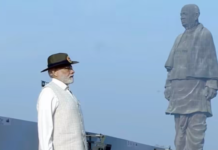YouTube on Thursday flashes two big news regarding its features for its android app. The feature that promises to expand the video site use of virtual reality seems to be quite a big feature as of now. The app is capable to support VR video – a format that gives viewers what the company says are more realistic 360-degree perspectives of films.
The virtual realty revolution that was quite flossing in the global market from past week finally unveiled a paradigm-shifting virtual reality mobile app that aims to “simulate richly immersive scenes from across the globe.”
On Thursday, Google announced that global video-sharing platform YouTube now supports 3-D virtual reality videos on its site. In a blog post, the tech company said: “Using the same tricks that we humans see in the world, VR video gives you a sense of the depth as you look around in every direction.” The aim is to give viewers a different sense of depth and scale, making “near things look near, far things look far.”
This paradigm shift is quite significant as this feature will lead users share and creates virtual reality videos on a global scale.
In order to view it, a user would call up a virtual reality video on the YouTube app, all you need to do is click a button on the video for VR mode, and place the phone in Alphabet Inc’s “Cardboard” device, a handheld gadget made from the standard box material that creates a VR viewing experience.
Neil Schneider, executive director of VR trade organization Immersive Technology Alliance said “the public can expect to see an explosion of high quality content, but said amateur content might be more difficult to come by because the gear to create VR content is typically expensive.”
On the other note Ray Iorio, a member of the Institute of Electrical and Electronics Engineers who is experimenting with creating films for Cardboard and Facebook’s Oculus Rift virtual reality headset, said “he would not be surprised to see VR recording capabilities on smartphones. The equipment I have right now, people will probably have on their phones in a couple years.”
Oculus Rift is scheduled for release next year and is expected to cost between $300 to $350. Cardboard costs between $5 and $50
However, for this technology only the Android version is available and the iOS version will be releasing quite sooner.













